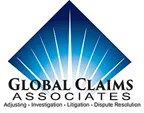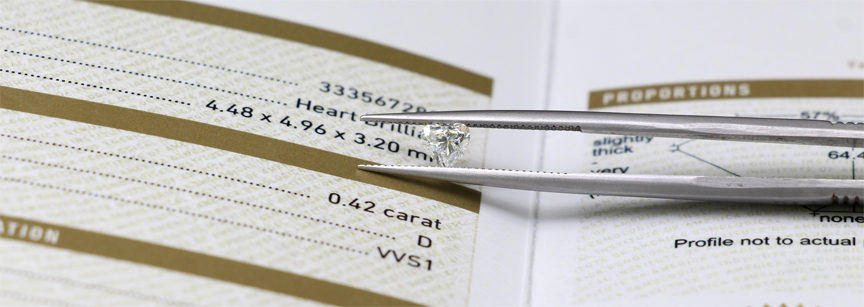Do Legal Standards for Diamond Grading Exist?
“The diamond industry employs its own private system of law rather than the law of the state”
Lisa Bernstein,The University of Chicago Law School
A few years ago, I was expert witness and consultant regarding a nasty conflict of diamond grading standards between a Nashville, Tennessee based law firm and a number of jewelers around the U.S. (The Overgrading Saga Continues, Rob Bates, JCK February 12, 2016). The central issue of the attorney’s claim was that only the Gemological Institute of America’s diamond grading standard can be legally used to grade diamonds, and that all other grading standards are…substandard. Central to the issue was the grading system of EGL Israel labs as compared to the claimed GIA grading system.
There was a plethora of cases in U.S. Federal Court that included (among others): CUMMINGS MANOOKIAN PLC v. Mervis Diamond Corportation (Civil Action No. 4:17-mc-00056. United States District Court, E.D. Texas, Sherman Division) and Diamond Consorium v. CUMMINS MANOOKIAN, PLC, et. al. (Civil Action No. 4:16-CV-00094. United States District Court, E.D. Texas, Sherman Division.) With the JCK Las Vegas shows coming up, I thought it might be good to look back at these cases, and review the actual legal standards, or lack thereof, that exists in the diamond grading lab industry.
This whole story prompted me to do an in-depth study of what constitutes a legal grading standard. What statute or law is required to establish a legally binding and enforceable grading standard for consumer products in general, and diamond grading specifically?
I should first confirm that I am not an attorney, and nothing in this edition should be construed as legal advice. I am writing this from a gemologist’s and insurance adjuster’s point of reference. However, I believe there are issues here that both jewelers and consumers need to be aware of regarding the concept of legal standards of diamond grading.
First, we need to understand the difference in the Code of Federal Regulations (CFR) and United States Code of statutes or laws.
Code of Federal Regulations
The United States National Archives maintains the records of the U.S. Government. They define the Code of Federal Regulations as:
“The Code of Federal Regulations (CFR) is a codification (arrangement of) the general and permanent rules published in the Federal Register by the executive departments and agencies of the Federal Government.” (archives.gov/federalregister)
In layman’s terms, the CFR is a published list of general rules from the various government offices that do not carry the force of law. An example is the FTC Guides for the Jewelry Industry under CFR Title 16, Section 23. These are guides are not laws, and do not contain any reference to a specific diamond grading standard.
The United States Code
The United States Code is a list of laws, referred to as “statutes” enacted by the U.S. Legislature. United States Code and Statutes are defined as follows:
“The United States Code is the codification by subject matter of the general and permanent laws of the United States.” (U.S. Government Publishing Office)
“Statutes are laws written and enacted by the legislative branch of government.” (Loyola University School of Law)
The term “law” is defined by the Oxford Dictionary as:
“The system of rules that a particular country or community recognizes as regulating the actions of its members and may enforce by the imposition of penalties:” (Oxford)
So the difference between the CFR and a United States Code is that the US Code is a list of enforceable statutes that are enacted by the legislative branch of the U.S. Government that carry penalties for violating the statute, while the CFR is simply a published list of guidelines published by various offices of the U.S. Government.
It should be stressed, once again, the FTC Guides for the Jewelry Industry are CFR.
US Statutes and the Jewelry Industry
The question is, therefore, are there laws in the United States Code that directly govern the jewelry and gemstone industry? The answer is: yes!
According to the U.S. Government House of Representatives website, Title 15 of the United States Code deals specifically with Commerce and Trade. Chapter 8 of Title 15 specifically sets forth the laws governing the stamping of gold and silver. Here are the actual provisions of this law:
CHAPTER 8—FALSELY STAMPED GOLD OR SILVER OR GOODS MANUFACTURED THEREFROM
- 291: Stamping with words “United States assay”, etc., unlawful.
- 292: Forfeiture.
- 293: Penalty for infraction.
- 294: Importation or transportation of falsely marked gold or silver ware prohibited.
- 295: Standard of fineness of gold articles; deviation.
- 296:Standard of fineness of silver articles; deviation.
- 297: Stamping plated articles.
- 298: Violations of law.
- 299: Definitions.
- 300: Application of State laws.
You will notice three important issues just from this listing:
- There are standards of fineness set forth to establish the grading of the gold or silver content, There are specific acts prohibited,
- There are penalties for violations of this law specifically provided by this law.
The bottom line is that this is a law, a statute. It has the elements of a law including specific grading standards and penalties for violating those standards. This law governs the gold and silver industry only, which leaves some serious questions regarding the legal standards for diamond grading.
Is the diamond industry covered by the United States Code?
I will save you some time by telling you that Unites States Code Title 15: Commerce and Trade contains 3,434 pages covering the entire list of 110 chapters of statutes. I know because I downloaded all 3,434 pages and searched for any part that contains any reference to diamonds or diamond grading.
Not once in 3,434 pages is the word “diamond” found in the United States Code Title 15.
Do legal diamond grading standards exist?
The bottom line is that neither the CFR Title 16, Section 23 covering the FTC Guides for the Jewelry Industry, nor the United States Code Title 15 covering Commerce and Trade contain any reference to any type of legal standard for diamond grading. Based on an extensive search of the United States Code and the U.S. Code of Federal Regulations:
- There is no industry standard established by law for grading a diamond,
- There is no authority established by law to set the standard for grading a diamond,
- There are no legal penalties for using or not using any specific diamond grading standard, There are simply no legal standards for grading diamonds.
Are the Gemological Institute of America’s Diamond Grading Scales the Industry Standard?
The answer to this question is a simple “no” because the GIA scales are terms and not grades. From the GIA website:
“Like the color scale, GIA’s clarity grading system developed because jewelers were using terms that were easily misinterpreted,…” (gia.edu)
The main issue of the GIA Grading Scale as being a scale of terms and not a standard of grading is because of the fact that the terms are subjective to an individual grader’s opinion. Again, from the GIA website regarding the definition of the Slightly Included grade level:
“Slightly Included (SI1 and SI2) Inclusions are noticeable to a skilled grader under 10x magnification”
The key term is “to a skilled grader.” What legally defines a “skilled grader” for diamonds? Since there are no professional licenses required for a diamond grader, there are no legal standards set forth as to what qualifies one to be a “skilled grader”. The very concept of diamond grading is that it is subjective opinion based on an unknown definition of what is a “skilled grader.”
Are GIA Graduate Gemologists the only “skilled graders” in the diamond industry? And if the GIA GG is the “skilled grader” standard, what professional licensing requirements qualify the GIA Graduate Gemologist diploma as the only “skilled graders” of diamond in the industry?
I think you see the point, but we need to take just one more step on this regarding the story in JCK, and ask two more questions.
The Nashville attorney’s website (now removed) made this statement, and I quote:
“Simply put, if your diamond was accompanied by a certificate issued by any organization other than the GIA, it’s time to investigate.” (www.diamondlawsuit.com)
My questions are simple:
- On what law was this statement based that an investigation is warranted
- What legal foundation establishes that an investigation should be started if someone has a diamond that was graded by “any organization other than the GIA”?
There was no legal foundation for this attorney’s statement, specifically regarding the legally required use of the GIA for diamond grading, that I could find in the CFR or US Code.
Conclusion
As I stated in the beginning, I am not an attorney, just a small town gemologist that is curious when I see statements like this that attempt to establish the GIA Grading Scale as some kind of defacto legal standard for diamond grading.
The GIA Diamond Grading Scale is a scale of terms, nothing more.
I can find no United States Code that establishes the GIA’s or any other diamond grading scale as the legally binding standard on the industry.
If there is any attorney out there who can provide a United States Code that establishes a legal diamond grading system, and/or that establishes the Gemological Institute of America as the legal diamond grading system provider, please let me know.
I will publish your information for our worldwide ISG community.
Until and unless that is produced, I can find no legal standard for the grading of diamonds in the United States.
I can find no legal basis to claim one diamond grading lab as being superior over any other diamond grading lab.
Which brings another question: How do the major diamond grading lab reports stand up in court? That answer is coming next.
Robert James, FGA, GG
President, International School of Gemology
Global Claims Associates
Texas Department of Insurance Property and Casualty Adjuster License #130043
Member: National Association of Independent Insurance Adjusters
Member: Insurance Appraisal and Umpire Association
Associate Member: American Bar Association

